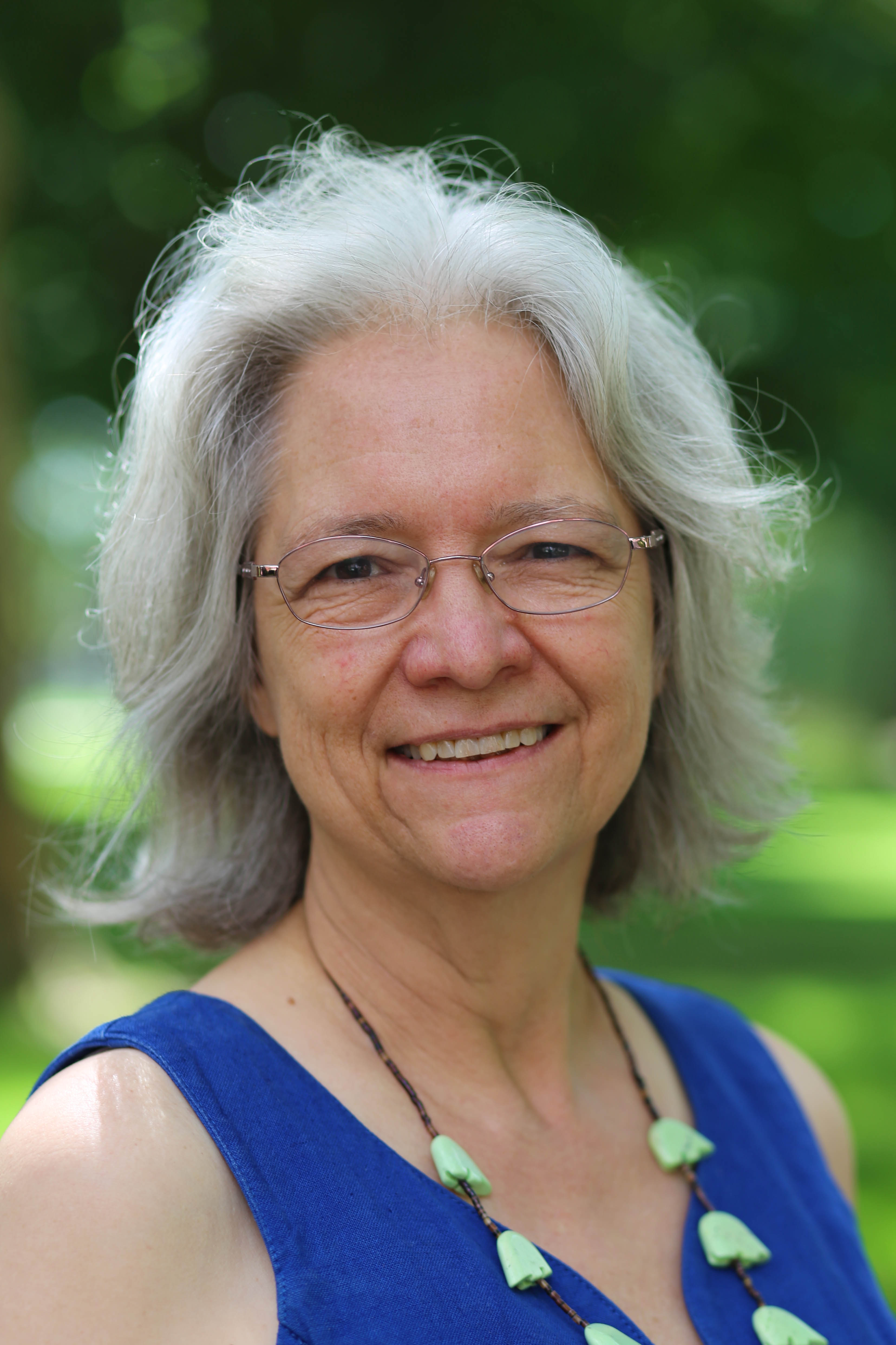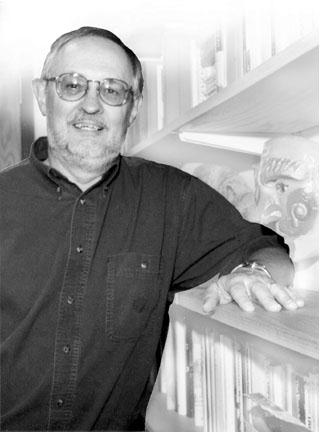MennoFolk3: Puns, Riddles, Tales and Legends
By Ervin Beck, accompanied by Don Swartzentruber's paintings
In this issue:
-
0
read more

Preface and Title Page
by Ann HostetlerThis month we proudly publish our first book in a single issue. MennoFolk 3 is the new collection of Mennonite folklore and stories by Ervin Beck, whose two previous volumes have been published by Herald Press. Ervin's readable, succinct style will entertain and provoke you with many Mennonite puns, tales, and riddles you've never heard before, and place others that may seem familiar. Don Swartzentruber's playful pop-Mennonite paintings create a lively conversation with the text. Delve in and enjoy! We hope to eventually make this book available in paper form through our Painted Glass press, which is under construction. - Ann Hostetler, co-editor
-
1
read more

Introduction: The Gordon Factor
by Ervin BeckMy good friend Gordon Yoder always has a new story to tell. Since he knows of my special interest in Mennonite and Amish stories, he takes the initiative in telling me his latest one. Invariably, he begins: "There was this Mennonite woman . . ." or "There was this Amish man . . ."
Sometimes his stories make it into my collection. But, lately, more often they do not because their contents have little or nothing at all to do with recognizably Mennonite or Amish experience. So Gordon has becomes my best critic, since the message he implicitly conveys is …
-
0
read more

Defining Mennonite: Puns and Riddles
by Ervin BeckThe quest for authentic Mennonite narratives will actually begin with names, puns and riddle-jokes. Most riddle jokes do embody highly condensed narratives. But my thesis is that these elementary, gnomic forms of folklore are inherently more fixed—and least subject to alterations, variants and The Gordon Factor—than are other kinds of folklore. Consequently, they constitute more distinctively Mennonite ethnic lore than do most narratives.
By common consent, puns are the lowest form of humor. We groan first, and then laugh. Puns are so easy to create—usually spontaneously—that they enter everyday conversation as interruptive non sequiturs. We are subject to the good …
-
0
read more

Defining Mennonite: Narratives
by Ervin BeckSome narratives serve as explicit or implicit definitions of what is meant by the designation Mennonite, whether in regard to cultural traits or religious commitment.
The most obvious kind of story that does this is the narrative that places a Mennonite, or Mennonites, in the punch line as the final ethnic group in a series of three or four—as with the Polish-Jewish-Black-Mennonite "book titles" riddle that opens Chapter 1. The Gordon Factor is strong in such stories, which usually communicate only a harsh, generic put-down of the final group in the series. Since they are easily transferred, by substitution, to …
-
0
read more

More Trickster Tales
by Ervin BeckThe "more" in the title of this chapter alludes to Chapter 4 in my first MennoFolk book, which studies a tradition of Mennonite trickster tales that reaches all the way back to Menno Simons (1496-1559), after whom the denomination is named. The legend about clever Menno in the stagecoach, eluding authorities by means of deceptive speech, embodies what in Dutch culture is known as "The Mennonite Lie." The trickster allows his opponent to misunderstand a speech or a situation and benefits from that situation without revealing the truth of it. The pursued Mennonite escapes danger without literally telling a lie, …
-
0
read more

Amish Slurs
by Ervin BeckMennonites have an ambivalent attitude toward the Amish, who are the near relatives of Swiss-Alsatian Mennonites through shared history, ethnicity and religious values. On the one hand, Mennonites admire the way the Amish remain steadfast to many Anabaptist principles that Mennonites themselves have compromised over the past decades. On the other hand, Mennonites want to separate themselves from these "backward" people with whom they are too often confused by the rest of the world In that ambivalence, Mennonites resemble American culture at large, as interpreted by David Weaver-Zercher in his book The Amish in the American Imagination (Johns Hopkins 2001), …
-
0
read more

The Amish Joke Back
by Ervin BeckIdeally, in a chapter devoted to stories that show Amish people in a positive light, or gaining the upper hand in a debate, all of the examples should come from the Amish themselves in order to show how they define themselves, positively, through traditional narratives. Unfortunately, that is not the case. As I mentioned before, that would require recording their stories as told in their native language, Pennsylvania German. Although I have Amish friends, I do not speak their German dialect. Consequently, I cannot "pick up" stories from natural conversational flow and it would be awkward, if not impossible, to …
-
0
read more

Dialect Stories
by Ervin BeckThe Alsatian German dialect that developed in the United States as Pennsylvania-Dutch/German remains the native language of Old Order Amish groups in the U.S. and Canada. Children learn to speak it as their first language and it remains the language spoken at home, although a version of High, or Standard, German is used in Amish church services and English is used in public discourse and writing. It is also the native language of Old Order Mennonites, although other Mennonites gave up German for English, beginning around the time of World War 1. Mennonites may have a few verses of German …
-
0
read more

Bawdy Tales
by Ervin BeckYes, Mennonites, being human, are also fascinated by taboo subjects—whether profane, obscene or merely vulgar. Chapter 1 presented a number of bawdy riddle-jokes, including the very popular ones about "two men a night" and intercourse standing up, and a few shady tales also appear in other chapters. I am surprised that there are not more such stories in my collection.
Of course, I was not expecting audiences of Mennonites to contribute bawdy stories in public settings. In fact, on occasion I was corrected by audience members, following the program, for telling a story that was too naughty for the setting. …
-
0
read more

Personal Legends: Formation
by Ervin BeckA personal legend is a story attached to an individual and believed to be true. The more prominent the person, the more stories are likely to be told about him or her. For instance, in the United States, more legends are told about Abraham Lincoln than about anyone else.
Because the person named in the legend is historical, the hearer initially is disposed to believe in the historical truth of the story. But the relationship of personal legend to personal history is a complex, and often dubious one, thanks to the tendencies in oral storytelling by which personal legends are …
-
0
read more

Personal Legends: George Brunk, Sr.
by Ervin BeckGeorge R. Brunk, Sr. (1871-1938) was a charismatic leader of a segment of the Mennonite Church that objected to the corroding influence of "modernism" and rival liberal theologies on traditional Mennonite beliefs and practices. Coming mainly from the conservative Virginia Conference, centered on Eastern Mennonite College (now University) in Harrisonburg, Virginia, they waged a vigorous campaign to restore the church, by presenting public programs throughout American Mennonite communities and by sponsoring the periodical Sword and Trumpet (1927-1938),which was overtly controversialist.
When George R. Brunk, Sr., died in 1938, Ernest G. Gehman (1901-1988) assembled an issue devoted to the memory of …
-
0
read more

More Personal Legends
by Ervin BeckAnabaptist groups, at their best, hold to the equality of all human beings. Like the Quakers, they tip their hats to no one—or to everyone. They are anti-hierarchical, suspicious of those who would lord it over others. In their fellowships of believers, they cultivate congregationalism and honor the voice of all.
In Amish communities, that ideal is expressed through uniform costume, as well as in cemeteries, where the small gravestones are of equal size, with barely enough room for the deceased's name and life dates. In Mennonite churches, the ideal is expressed by decisions arrived at by consensus, by studies …
-
0
read more

Sources
by Ervin BeckBeck, Ervin. MennoFolk: Mennonite & Amish Folk Traditions. Scottdale, PA: Herald Press, 2004.
__________. MennoFolk2: A Sampler of Mennonite & Amish Folklore. Scottdale, PA: Herald Press, 2005.
______.“Menno’s Children: Tricksters All.” Goshen College Bulletin (May 1983): 6-7.
______. “Stories Mennonites Tell.” Gospel Herald (31 Jan. 1984): 68-71.
Braun, Orlando. “That Mennonite Joke.” Docu-Comedy (film). Prairie Boy Productions 2016.
Brednich, Rolf. Mennonite Folklife and Folklore. Ottawa: National Museums of Canada, 1977.
Chornoboy, Eleanor Hildebrand. Faspa with Joy: A Snack of Family Stories Told by Family and Guests. [Canada: The author], 2007.
Gates, Gary. How to Speak Dutchified English. Intercourse, PA: Good …